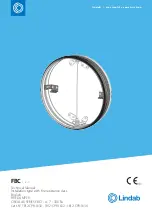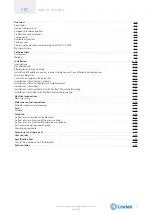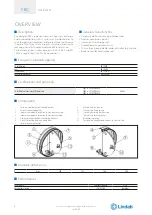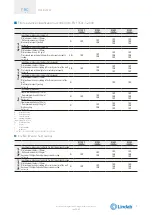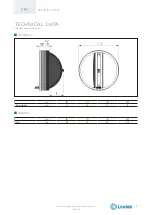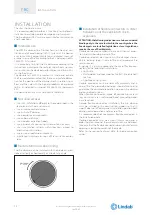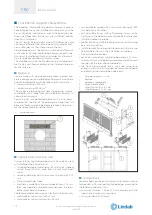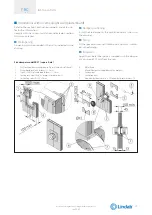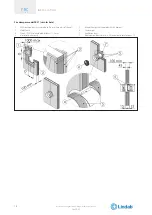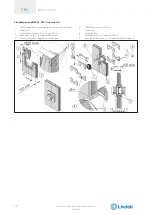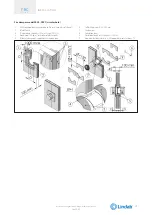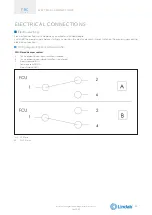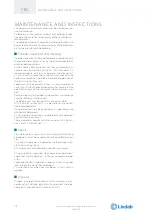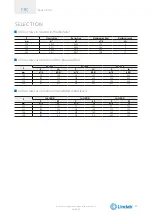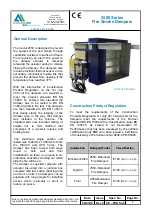
InSTALLATIon
FBC
1 - 4 - 7
10
/34
rev 20-02
InSTALLATIon
The sizes shown are in mm.
It is recommended to perform a functional test before In-
stallation to exclude possible damage during transport.
The fire dampers FBC must be accessible for maintenance
and inspections.
Intended use
The MP3 fire dampers are “Devices for use in heating, ven-
tilation and air conditioning (HvAC) systems at fire bound-
aries to mantain compartmentation and protect means of
escape in case of fire” according to the 3.1 paragraph of En
15650:2010 standard.
It is compulsory to install the fire damper according to the
instructions indicated in the technical data sheet and man-
ual to maintain the declared performances and, in particu-
lar, the fire classes.
The double test (with the mechanism inside and outside
the fire area) demonstrated that there is no preferred direc-
tion for the position of the damper, both in relation to air
flow and the side with the higher probability of exposure
to fire, as indicated in standard En1366-2:2015 (paragraph
6.2).
Use permitted in any civil and industrial building.
Not allowed uses
•
Use with installations different to those described in the
technical data sheet and manual;
•
use as smoke control damper;
•
use as shut off damper;
•
use in explosive environments;
•
use on board of ships;
•
use in cooker extraction hoods;
•
use in pneumatic conveying systems of dust or corn;
•
use in ventilation systems within locations subject to
chemical contamination;
•
use in non inspectable enviroments.
•
installation in ceiling crossings of fire resistant counter-
tops.
Blade rotation axis positioning
The fire damper can be installed with the blade axis posi-
tioned vertically or horizontally or tilted at any angle.
Installation of flexible connectors in order
to balance out the ventilation ducts
expansion
ATTENTION: the following indications are to be considered
binding only in the case in which in the country where the
fire dampers are installed legislation or local regulations
require the use of flexible joints�
Flexible connectors compensate any duct thermal expan-
sion and wall bending in case of fire.
Flexible connectors are used to limit fire damper stresses
due to external forces in case of fire and to preserve fire
resistance class.
In general it is always appropriate the use of flexible con-
nectors for the followings installations:
–
light walls;
–
Plasterboard and rock wool or Fire Batt (weichschott)
sealing;
–
Applique fixing system.
Flexible connector must be normal flammability and in
case of fire the grounding bonding should disconnet to
guarantee the complete separation between fire damper
and connected air duct.
when flexible connectors made of conductive material
(e.g. aluminum) are used, no additional grounding bond-
ing is required.
Despite flexible connector installation, the fire damper
must be installed in the construction support so that its
weight does not affect damper’s installation position both
during normal operation and in case of fire.
It is recommended not to compress flexible connectors in
the installation phase.
Flexible connector must be at least 100mm long and in
order that possible duct thermal expansions are balanced.
Take care that the flexible connector does not interfer with
opening / closing movement of the blade.
Refer to the section Technical data for blade exposition
values.
FBC
1 - 4 - 7
10
We reserve the right to make changes without prior notice
Summary of Contents for FBC1
Page 2: ...This is a 34 page manual ...
Page 32: ......

